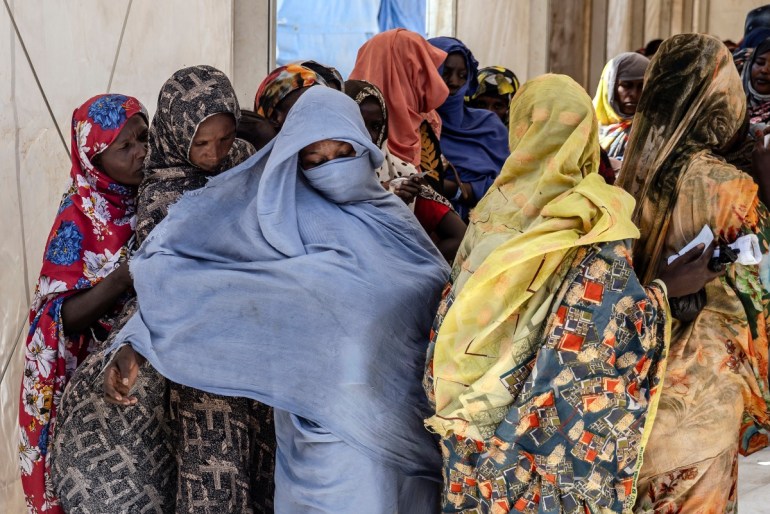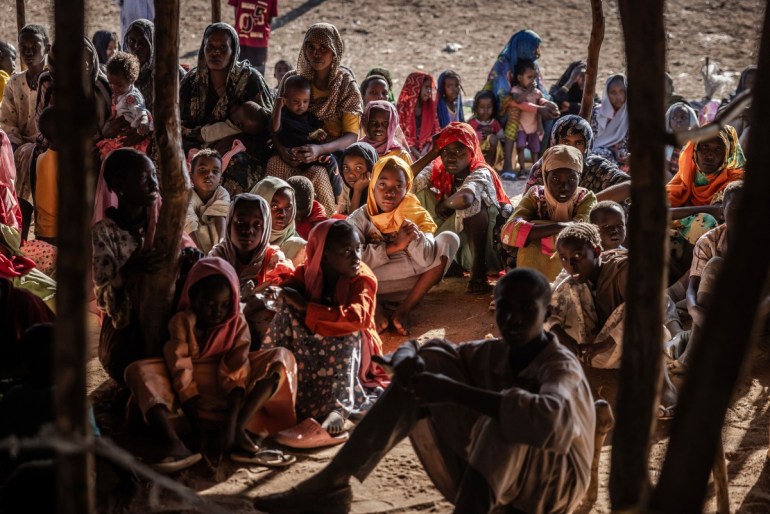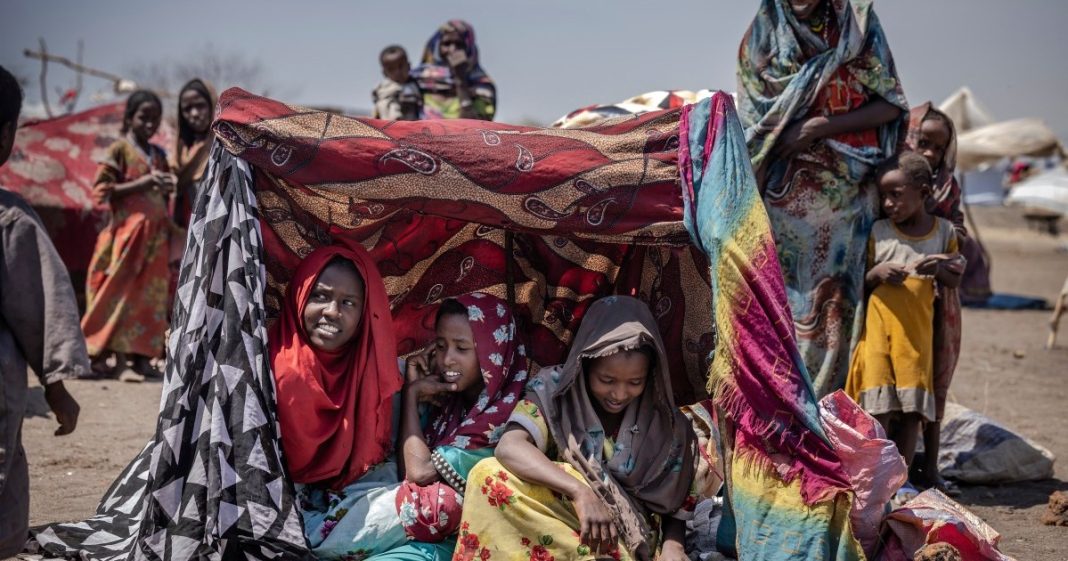A new truck arrives in the South Sudanese town of Renk, packed with dozens of elderly men, women and children, their exhausted faces betraying the strain of their traumatic journey out of war-ravaged Sudan.
They are among more than half a million people who have crossed the border into South Sudan, which is struggling to accommodate the new arrivals.
Renk is just 10km (6.2 miles) from Sudan, where fighting broke out in April last year between army chief Abdel Fattah al-Burhan and his former deputy Mohamed Hamdan Daglo, commander of the paramilitary Rapid Support Forces (RSF).
Since then, Renk’s two transit centres run by the United Nations have been overwhelmed by an uninterrupted influx of frightened people, fleeing for their lives.
The journey is rife with danger, said Fatima Mohammed, a 33-year-old teacher who escaped with her husband and five children from El-Obeid city in central Sudan.
“The bullets were entering our house. We were trapped between crossfire in our own street. So we understood that we needed to leave for the good of our kids,” she said, describing the situation in Sudan as “unsustainable”.
It took them five days to make their escape, with Sudanese soldiers and RSF fighters “making [it] difficult for us to leave the country”.
“They took all our phones at one checkpoint, a lot of our money [at] another one. We saw abuses happening at those checkpoints,” she said.

‘Stuck here’
Since the start of the conflict, nearly eight million people, half of them children, have fled Sudan.
Around 560,000 of them have taken refuge in South Sudan, according to the UN, which estimates that around 1,500 new arrivals turn up in the country every day.
Many spend months waiting in the transit camps, hopeful that someday soon they will be able to return home.
Iman David fled fighting in Sudan’s capital Khartoum with her then three-month-old daughter, leaving her husband behind.
“It was supposed to be a short stay, but I am still stuck here in Renk after seven months,” said the 20-year-old.
“My hope is to go back to Khartoum and reunite with my husband but I don’t know his fate.”
Thousands of civilians were killed in the war, according to UN figures.
Some 25 million people, more than half of Sudan’s population, need humanitarian assistance, while an estimated 3.8 million children under the age of five are suffering from malnutrition, the UN says.

‘Better than Khartoum’
While many in Renk long to return home, others hope to travel onwards to the town of Malakal in Upper Nile state, which is also hosting a huge number of refugees.
At Renk port, hundreds of people lined up under the oppressive glare of the midday sun, waiting hours to hop aboard the metal boats which make the trip at least twice a week.
As she waited, Lina Juna, a 27-year-old mother of four, said her final destination was the South Sudanese capital, Juba.
“I have nothing to do in Juba, no family members or friends, no business or work to take care of because I have spent all my life in Sudan,” she said.
“But I still expect Juba to be much better than Khartoum,” she added, recalling days spent struggling to find food as heavy fighting rocked the city.
Several hours later, she managed to board a boat, one of two carrying some 300 people each.
“Today is a good day for us,” said Deng Samson, who works for the International Organization for Migration.
“Some weeks we have seen ourselves completely overwhelmed,” said Samson, adding that the approaching monsoon made him nervous.
“We are truly afraid of what will happen when the rainy season comes, with waters rising from the river and disrupting the normal functioning of the port.”
With up to 10 trucks and buses arriving in Renk every day, the UN is trying to mobilise the international community, launching an appeal for $4.1bn this month to respond to the most urgent humanitarian needs.







